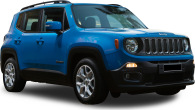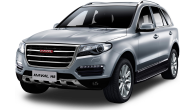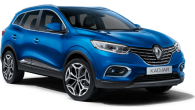Big news on the smaller SUV front. Suzuki has launched an “all-new” S-Cross.
But despite what some of the clever photography might have you think, this MY23 update is actually the second facelift of the decade-old original, bringing a redesigned front and rear end as well as a minor dashboard update, with little changing underneath.
A bit more than what the current Mitsubishi ASX received back in 2019 but far less than what the latest Ford Ranger espouses, then.
That all said, we came away surprised from what amounted to a reunion with a quiet old acquaintance that’s long lurked away from the crossover spotlight.
Is this year the S-Cross’ time to shine?
Suzuki S-Cross 2023: Turbo GL+ (qld)
| Engine Type | Turbo 4, 1.4L |
|---|---|
| Fuel Type | Premium Unleaded Petrol |
| Fuel Efficiency | 6.2L/100km (combined) |
| Seating | 5 |
| Price From | $32,340 - $38,500 |
Does it represent good value for the price? What features does it come with?
5 / 10
Not from $40,990 (all prices stated are before on-road costs) sadly, or $3500 more for the $44,490 Prestige flagship that sits as the largest and most expensive model in the brand’s entire line-up.
This represents a hike of $10,500 and $12,500 respectively.
Suzuki says this pricing is in line with equivalently-equipped rivals like the extremely popular Kia Seltos and new Nissan Qashqai, especially given that a turbo petrol engine with all-wheel drive (AWD, dubbed AllGrip in marketing-speak) is currently the only specification you can buy.
That is true. The previous S-Cross, facelifted in 2016, was front-wheel-drive only (though earlier grades did offer AWD), so the MY23 AWD version should absorb at least $2500 of that price inflation.
.jpg)
The previous model also lacked some now-critical safety technologies that have now at last made it on the Suzuki, including autonomous emergency braking (AEB), Lane Departure Warning, Blind Spot Monitoring, Rear Cross-traffic Alert and something called Weaving Alert that sounds like a driver-drowsiness warning prompt.
Additionally, the newcomer adopts adaptive cruise control with full stop/go functionality, high beam assist and auto-on/off headlights for the first time, as well as a redesigned upper-centre console housing a updated multimedia system with wireless Apple CarPlay in either 7.0-inch or 9.0-inch (for Prestige) sizes.
These build on top of the old model’s seven airbags, electronic stability control, anti-lock brakes with electronic brake-force distribution and brake-assist, cruise control, front fog lights, keyless entry/start, 7.0-inch touchscreen, reverse camera, satellite navigation, wired Apple CarPlay/Android Auto compatibility, Bluetooth audio and telephony connectivity, dual-zone climate control, electric folding mirrors, rear privacy glass and 17-inch alloy wheels.
.jpg)
Shelling out another $3500 for the Prestige grade now scores you that nine-inch touchscreen, 360-degree view camera, leather trimmed seating, polished alloys and the debut of a panoramic sunroof.
However, nowadays, with the S-Cross Prestige especially nudging $50K-driveaway, it’s still missing goodies like the full electronic instrumentation, twin-screen displays, a head-up display, wireless charging, premium multi-speaker audio, a powered driver’s seat with memory, heated/vented front seats and an electric tailgate that the MY23 Seltos GT-Line gains, for similar money.
Most of these items are also available in the Qashqai and Mazda CX-30 at this price point.
There is also no escaping the fact that the S-Cross is looking old and dated inside already, while the Seltos and new Qashqai especially are crisp, modern designs throughout.
But don’t fret, Suzuki fans. We understand that cheaper S-Cross 2WD grades are in the pipeline, perhaps for next year.
Let’s wait and see.
Is there anything interesting about its design?
6 / 10
It’s been reported that Suzuki in Italy was responsible for the restyle. One of its aims was to more-emphatically position the latest S-Cross above the (slightly) smaller Vitara.
The Italian connection is not new to the series, as the preceding SX4 (you’ll still find that badge on the tailgate) was the deft work of renowned design firm Italdesign. It was an early small SUV pioneer back in 2006.
.jpg)
What’s immediately obvious is that the MY23 S-Cross version looks heaps better up front than its angry-faced immediate predecessor. Banishing the fussy toothy grille for a layered multi-LED headlight design and modish chrome-bar grille insert gives the Hungarian-made crossover a bolder and far more contemporary appearance.
What’s more surprising for a facelift is the reshaping of the C-pillar immediately behind the rear doors, swapping out the old triangular back light for a narrower rectangular unit. Along with the harder-edged tailgate, blocker bumpers and raised horizontal tail-light treatments, they reveal the sheer extent of design change that’s occurred. The Suzuki has now at last lost its original Nissan Dualis/Qashqai-esque profile.
.jpg)
However, despite the aid of much larger and now-squared-off wheel arch cladding and repositioned plastic strips along the sides, the carryover doors and roofline do betray the S-Cross’ 2013 vintage in profile.
Will buyers care? The Suzuki still looks good anyway.

How practical is the space inside?
7 / 10
Besides the inherent reliability of buying Suzuki, one of the previous S-Cross’s biggest advantages was its spacious and practical interior.
Of course, dimensionally almost everything carries over, so it remains easy to get in thanks to big doors that open wide. There’s ample space front and rear, with sufficient headroom, legroom and shoulder width for an SUV in this class front and back, while good all-round vision is afforded by a commanding driving position and plenty of glass.
Objectively, the S-Cross’ cabin is difficult to fault.
The front seats are broad but seem supportive enough. Most people should find the right driving position ahead of the (carryover) steering wheel, that adjusts for reach as well as height.
.jpg)
The instrument dials are clear and simple to decipher, aided by the addition of an auxiliary digital speedo (at last). There’s no missing the camera within the newly-elevated centre touchscreen. It’s an easy stretch to the climate control buttons and there are several places to store things in or on, especially in the large-ish glove box.
Front and rear centre armrests are also fitted, with the rears containing cupholders. Additionally, while there is lots of hardwearing plastic, it seems of decent quality and is well glued together.
Nobody will be intimidated by the unfamiliar in this Suzuki. Timid and perhaps even older drivers in particular ought to feel at home.
However, repositioned centre console and updated multimedia screen apart, it’s much the same as when the first S-Cross surfaced in 2013, and that might be an issue for potential buyers seeking to buy a $45,000 to $50,000 SUV.
.jpg)
More annoyingly, the front passenger seat lacks a cushion height adjuster; there is no physical volume knob for the multimedia system, so users must tap or jab a screen or disturb the driver by using the steering wheel switch instead; the rear seat has no passenger-facing air vents; and the 7.0-inch touchscreen is laughably tiny in 2022.
Plus, the Prestige’s missing equipment as found in some similarly-priced up-spec rivals might put people off; no head-up display, heated seats, wireless charger or configurable instrumentation are just a few of them. It all feels old and not premium enough – something a quick visit to a Kia, Hyundai or Nissan dealer will immediately reveal.
Never mind. At least the rear backrest reclines (a tiny bit) for added comfort, while further back, boot capacity remains the same at 430 litres. The backrest has a 60:40 split and the floor can be positioned in different locations. With the seats folded down, capacity rises to 665L, while maximum volume is 1230L. The load area is flat and wide and a space saver spare wheel is located beneath the boot floor.
Overall, then, the S-Cross is a pleasant and accommodating package, but one that will seem dated compared to newer rivals.
What are the key stats for the engine and transmission?
8 / 10
The 2023 S-Cross uses Suzuki’s well-received Boosterjet engine tech.
As before, this means a 1373cc 1.4-litre twin-cam direct-injection turbocharged four-cylinder petrol engine, mounted transversely and driving all four wheels via a six-speed torque-converter automatic transmission, with paddle shifters included.
No manual gearbox is available.
.jpg)
Power is rated at 103kW at 5500rpm and the 220Nm torque maximum kicks in from 1500-4000rpm. Kerb weight has jumped 90kg, from 1170kg to 1260kg (1290kg for Prestige), mainly due to the adoption of AWD.
Speaking of which, the AllGrip AWD transmission has four modes – Auto (front-drive only unless loss of traction is detected), Sport (with up to 50 per cent of torque goes to the rear wheels), Snow (offering up to 30 per cent rear-wheel drive) and Lock. Ground clearance is rated at 175mm.
Steering is via an electric rack and pinion set-up, the front suspension is a MacPherson strut-style design and the rear end uses a torsion beam arrangement. All wheels are 17-inch, and each contains a disc brake.
How much fuel does it consume?
7 / 10
The S-Cross averages 6.2 litres per 100km, with a carbon dioxide emissions rating of 145 grams per kilometre. Reflecting a 90kg-odd kerb weight hike, this is up from 5.9L/100km (for a 138g/km rating) in the previous model.
Driven quite hard at times on country roads, our trip computer showed an average of 10L/100km, which actually reflects the S-Cross’ sporty personality... as well as a non-run-in odometer starting mileage of just 180km.
On the flipside, the 1.4-litre turbo prefers the 95 RON premium unleaded brew.
Warranty & Safety Rating
What safety equipment is fitted? What safety rating?
7 / 10
No ANCAP crash test rating information has been released by Suzuki for the S-Cross.
The pre-facelift version managed to score five stars, but that was back in 2013. It lacked some essential safety technologies, that have now made it to the MY23 model, including autonomous emergency braking (AEB), Lane Departure Warning, Blind Spot Monitoring, Rear Cross-traffic Alert, Weaving Alert (a driver-drowsiness warning prompt) and front/rear parking sensors as standard.
It also gains adaptive cruise control with full stop/go functionality, high beam assist and auto-on/off headlights, building on the old model’s seven airbags, electronic stability control, anti-lock brakes with electronic brake-force distribution and brake-assist.
There is no information regarding the operating range of the AEB tech.
Along with a trio of child-seat tether anchorages, the S-Cross’ rear seat base features two ISOFIX attachments.
What does it cost to own? What warranty is offered?
7 / 10
Suzuki offers an industry-average five-year/unlimited kilometre warranty and roadside assistance.
Service intervals are every 12 months or 10,000km, while published basic capped-price servicing is available. In the previous model with exactly the same powertrain, prices started at $239 (years one and five) and reached as high as $429 (year four).
What's it like to drive?
8 / 10
Here’s the biggest surprise about the new S-Cross: it does not drive like a nine-year old design.
That’s mainly thanks to the energetic and effective performance offered by the 1.4-litre turbo Boosterjet petrol engine. But we can also credit Suzuki’s chassis engineers for creating a smooth and agile handling machine as well.
Let’s start with that powertrain.
Unlike many rivals, the S-Cross benefits from having a torque-converter auto rather than a CVT continuously variable transmission, which means it accelerates off the line seamlessly like the latter, yet changes up and down through each gear ratio with a prompt, discernible step. The gearbox responds instantly if you need to access a lower gear for extra power and does not drone if you floor the throttle for whatever reason.
.jpg)
While having six forward gears might sound a bit too few in 2022, the auto is tuned to work within the turbo engine’s torque band, and so there’s always a ready supply of muscle as required; if you need extra performance, it comes on quickly, strongly and very smoothly, providing the reassurance of fast overtaking power on the open road.
The 1.4T remains one of our favourite powertrains, period, and is by far the best thing about the S-Cross.
Most drivers will also appreciate the light steering, which makes for easy parking as well as effortless low-speed manoeuvrability, so it’s great around town.
However, the steering effort could certainly use a bit more weight at higher speeds, as it’s just too light, especially considering how balanced and predictable the handling and roadholding are. The S-Cross corners with agility and accuracy, and goes exactly where you point the front wheels. Even a little more resistance and feedback from the steering would benefit the driver as a result, especially in wet conditions.
We never had the chance to drive the Suzuki in the rain, so can’t say if the AWD system adds another layer of roadholding grip or confidence. But on gravel, the handling remains neutral and composed, so we hold out hope that the same would also apply over wet roads.
.jpg)
Fitted with quality Continental EcoContact6 tyres, the S-Cross also felt quiet and refined out on the highway roads we tested it on, while offering a decent level of suppleness over bumpier surfaces. Again, a more thorough drive in urban conditions is required to see if the ride quality matches our initial impressions.
Overall, then, the MY23 S-Cross drives and feels like a newer vehicle than its near-decade old design suggests. Much of that is due to the speed and sophistication of its Boosterjet powertrain, but the overall chassis dynamics have long been sound anyway.
We weren’t expecting such a positive driving outcome.
Verdict
There’s no way around it. The S-Cross might have a smart new face and a higher level of safety equipment compared to before, but it still looks like a crossover from the previous decade, lacking some features that fresher machinery now include for the money.
Speaking of which, Suzuki’s decision to import the AWD only versions from Europe further undermines the series, since its circa-$45,000 driveaway price tag puts the old stager in the company of some very impressive newer rivals.
However, with sound packaging, a user-friendly interior, strong turbo performance and composed dynamics, there’s still much to recommend if you’re a small SUV buyer unconcerned about driving the latest thing.
That said, there are more modern and compelling alternatives out there.
Note: CarsGuide attended this event as a guest of the manufacturer, with meals provided.
Pricing Guides



.jpg)

.jpg)
.jpg)
.jpg)
.jpg)
.jpg)

_0.jpg)









































 copy.png)













.jpg)
.jpg)

.jpg)

.jpg)

.jpg)



.jpg)
Comments